Vintage (1980s?) Igloo Cooler: 2,860 ppm Lead INSIDE & 10,800 outside. 90 is unsafe. [Arsenic & Cadmium too!]
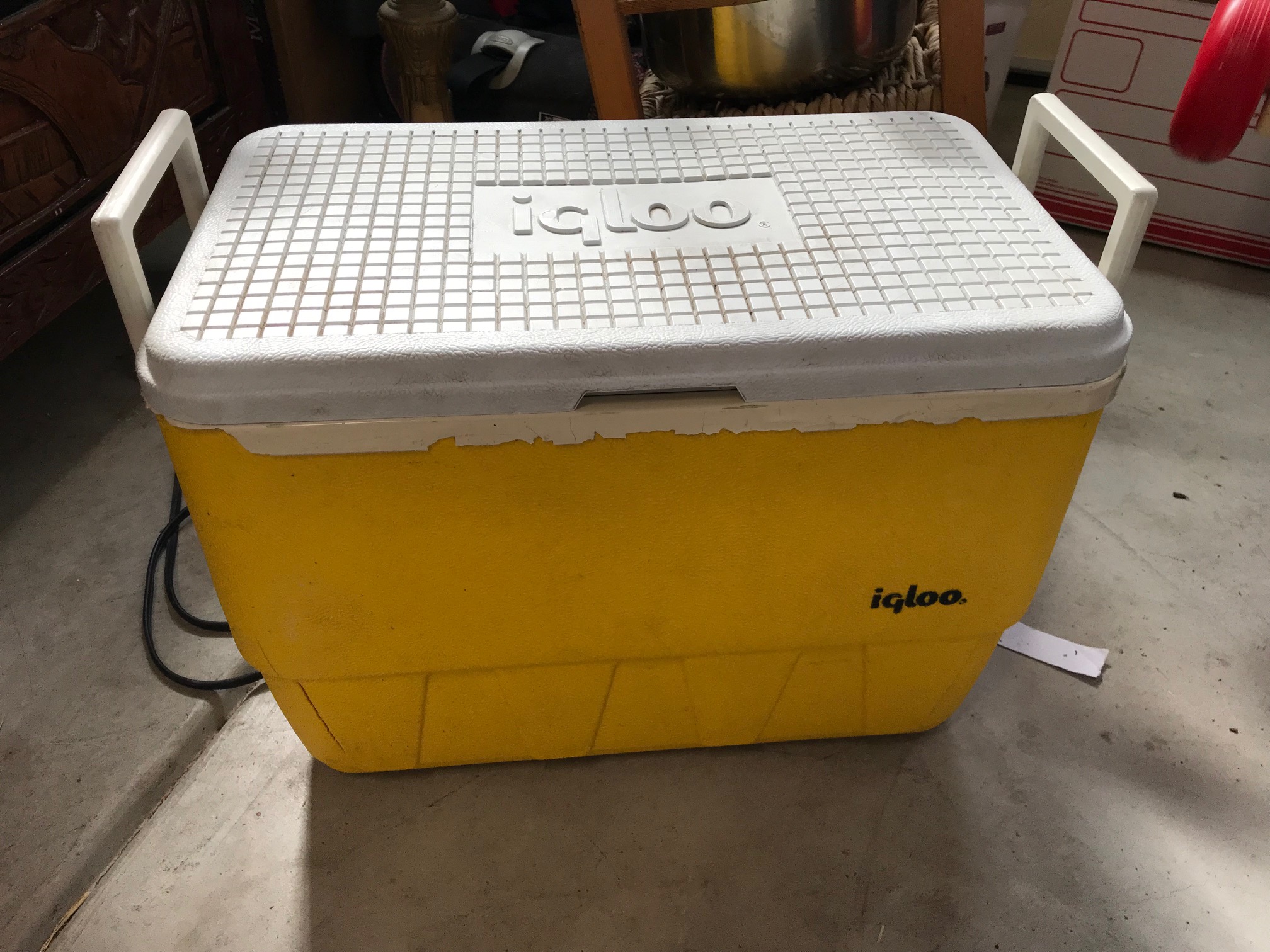 When tested with an XRF instrument, this Igloo brand cooler (c. 1980s) had the following readings:
When tested with an XRF instrument, this Igloo brand cooler (c. 1980s) had the following readings:
The white plastic handles (image above):
- Lead (Pb): 576 +/- 17 ppm
- Arsenic (As): Non-Detect (Negative)
- Mercury (Hg): Non-Detect (Negative)
- Cadmium (Cd): Non-Detect (Negative)
- Antimony (Sb): Non-Detect (Negative)
- Barium (Ba): 142 +/- 65 ppm
- Bromine (Br): 7 +/- 2 ppm
- Zinc (Zn): 25 +/- 6 ppm
- Copper (Cu): 26 +/- 9 ppm
- Iron (Fe): 40 +/- 16 ppm
- Vanadium (V): 227 +/- 150 ppm
- Titanium (Ti): 14,500 +/- 400 ppm
Please continue reading below each image.
 The yellow plastic outside (image above):
The yellow plastic outside (image above):
- Lead (Pb): 9,044 +/- 119 ppm
- Cadmium (Cd): 47 +/- 9 ppm
- Arsenic (As): 711 +/- 52 ppm
- Mercury (Hg): Non-Detect (Negative)
- Antimony (Sb): Non-Detect (Negative)
- Chromium (Cr): 2,100 +/- 88 ppm
- Zinc (Zn): 22 +/- 6 ppm
- Iron (Fe): 42 +/- 18 ppm
- Vanadium (V): 202 +/- 100 ppm
- Titanium (Ti): 666 +/- 166 ppm
Please continue reading below each image.
 The black painted logo area on the outside (image above):
The black painted logo area on the outside (image above):
- Lead (Pb): 10,800 +/- 100 ppm
- Cadmium (Cd): 41 +/- 9 ppm
- Arsenic (As): 936 +/- 59 ppm
- Mercury (Hg): Non-Detect (Negative)
- Antimony (Sb): Non-Detect (Negative)
- Chromium (Cr): 2,561 +/- 100 ppm
- Zinc (Zn): 29 +/- 6 ppm
- Iron (Fe): 55 +/- 20 ppm
- Titanium (Ti): 1,019 +/- 184 ppm
Please continue reading below each image.
 The cream plastic inside (food surface, image above):
The cream plastic inside (food surface, image above):
- Lead (Pb): 2,860 +/- 47 ppm
- Cadmium (Cd): 31 +/- 7 ppm
- Arsenic (As): Non-Detect (Negative)
- Mercury (Hg): Non-Detect (Negative)
- Antimony (Sb): Non-Detect (Negative)
- Bromine (Br): 40 +/- 4 ppm
- Zinc (Zn): 15 +/- 7 ppm
- Copper (Cu): 52 +/- 12 ppm
- Iron (Fe): 35 +/- 20 ppm
- Vanadium (V): 499 +/- 194 ppm
- Titanium (Ti): 28,900 +/- 500 ppm
Please continue reading below each image.
 The white plastic lid (image above):
The white plastic lid (image above):
- Lead (Pb): Non-Detect (Negative)
- Arsenic (As): Non-Detect (Negative)
- Mercury (Hg): Non-Detect (Negative)
- Cadmium (Cd): Non-Detect (Negative)
- Antimony (Sb): Non-Detect (Negative)
- Zinc (Zn): 16 +/- 7 ppm
- Copper (Cu): 18 +/- 11 ppm
- Iron (Fe): 166 +/- 24 ppm
- Vanadium (V): 467 +/- 179 ppm
- Titanium (Ti): 21,300 +/- 400 ppm
To see more vintage plastic items I have tested, click here.
How much Lead is “too much” Lead? Is this much Lead “a lot”?
For context, the amount of Lead that is considered unsafe (and illegal) in a newly-manufactured item intended for use by children is anything 90 ppm or higher in the paint, glaze or coating and anything 100 ppm or higher in the substrate.
Food use items are not currently regulated in the U.S. (and historically have not been regulated) for total XRF-detectable Lead content, unlike items intended for use by children are now regulated. It is my stand, however, that all food use items should at LEAST be regulated to the same strict current standard applied to toys and other items intended for use by children.
How accurate and thorough is the testing you do?
Each test result reported on this blog is from a test using a freshly calibrated XRF (testing in consumer goods mode) and has been done for a minimum of 60 seconds unless otherwise stated. Tests are repeated multiple times to confirm the accuracy of the results. Test results are replicable, science-based and accurate. In many cases (like with this cooler) the item is in my collection of “toxic things” for future testing (if required) and for a museum exhibit that I am working on.
Takeaway
Needless to say – I would avoid using this (or any vintage plastic food-use product) for its intended purpose. Holding onto (or acquiring/collecting) vintage plastics manufactured for food-use purposes is never a good idea. I especially cringe when thinking about how often kids (or adults) might scoop ice out of a cooler like this to chew on on a hot day or to add to their drinks (after it has been sitting in a Leaded vessel for awhile). New plastics made for food use should generally be Lead-free.
As always thank you for reading and for sharing my posts. Please let me know if you have any questions.
Tamara Rubin
#LeadSafeMama 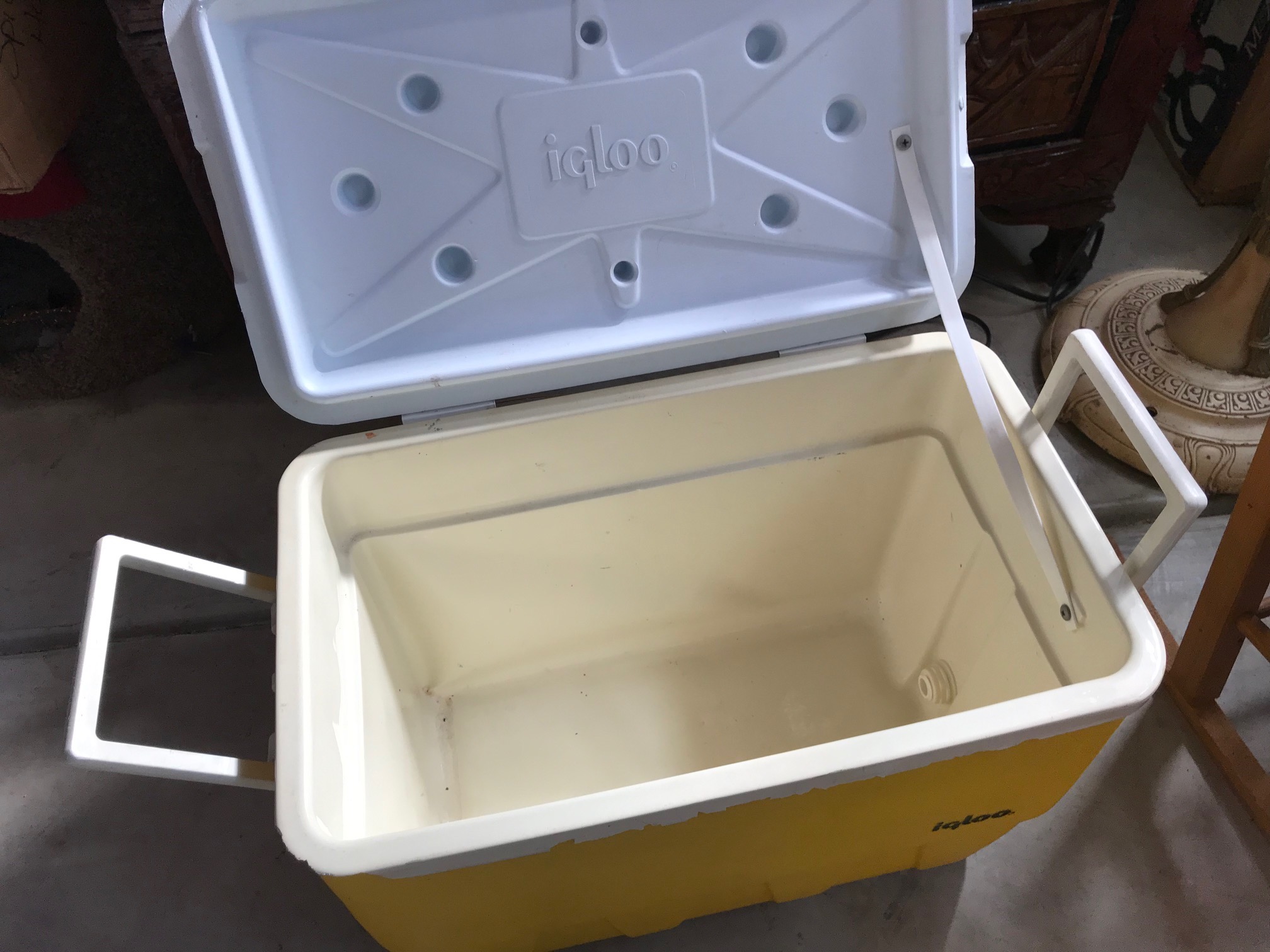
Never Miss an Important Article Again!
Join our Email List


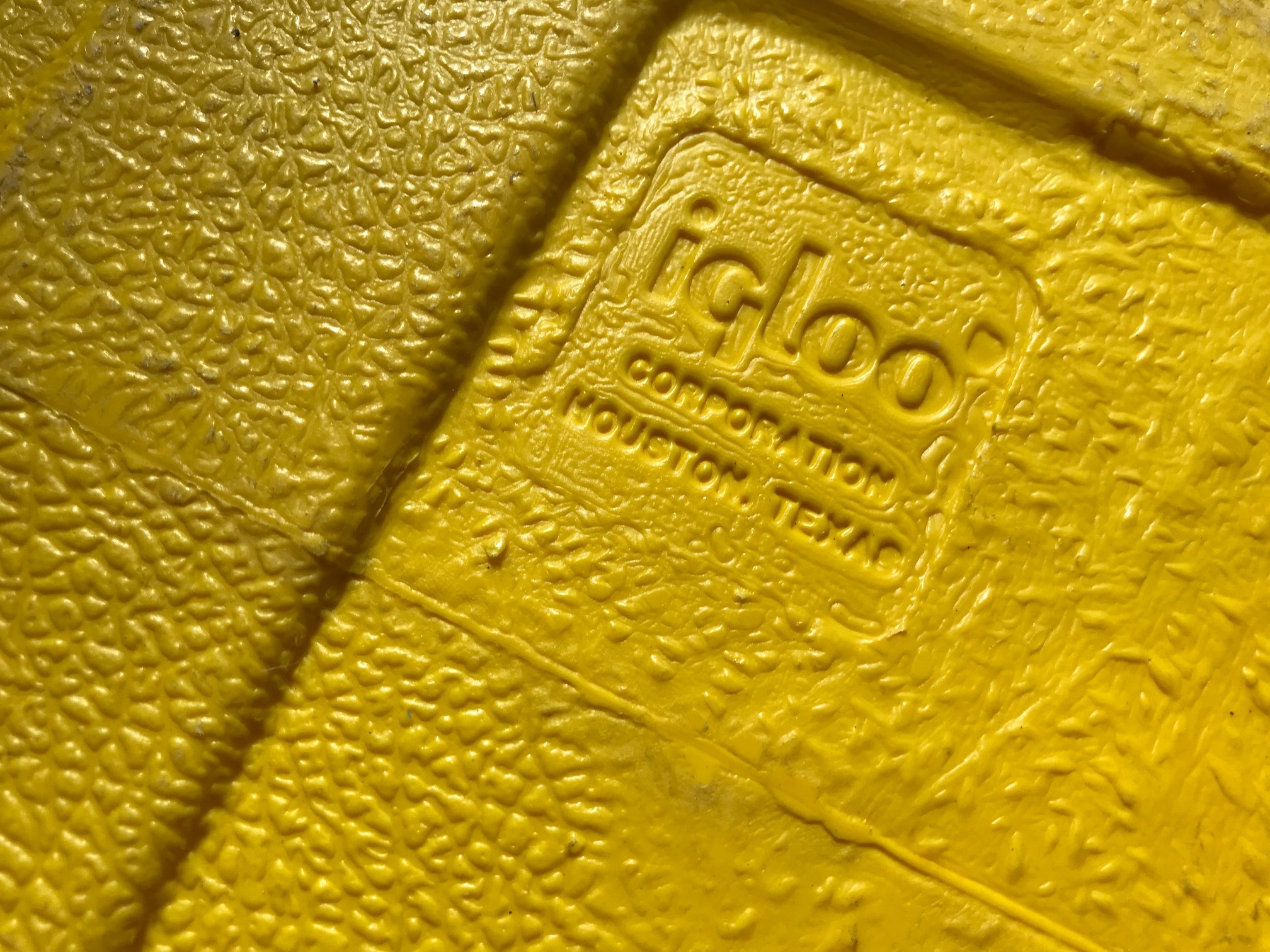 The yellow plastic outside (image above):
The yellow plastic outside (image above):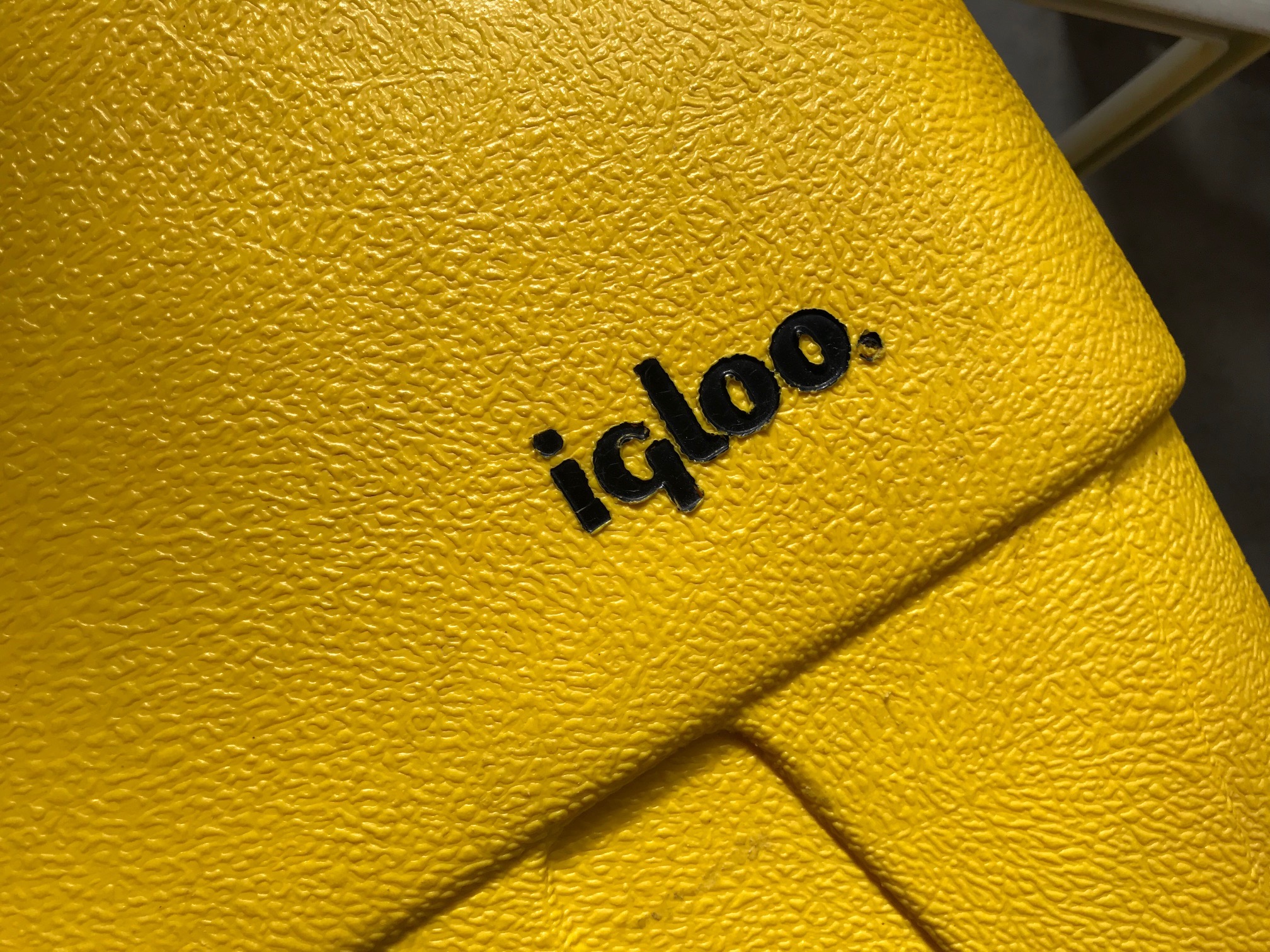 The black painted logo area on the outside (image above):
The black painted logo area on the outside (image above):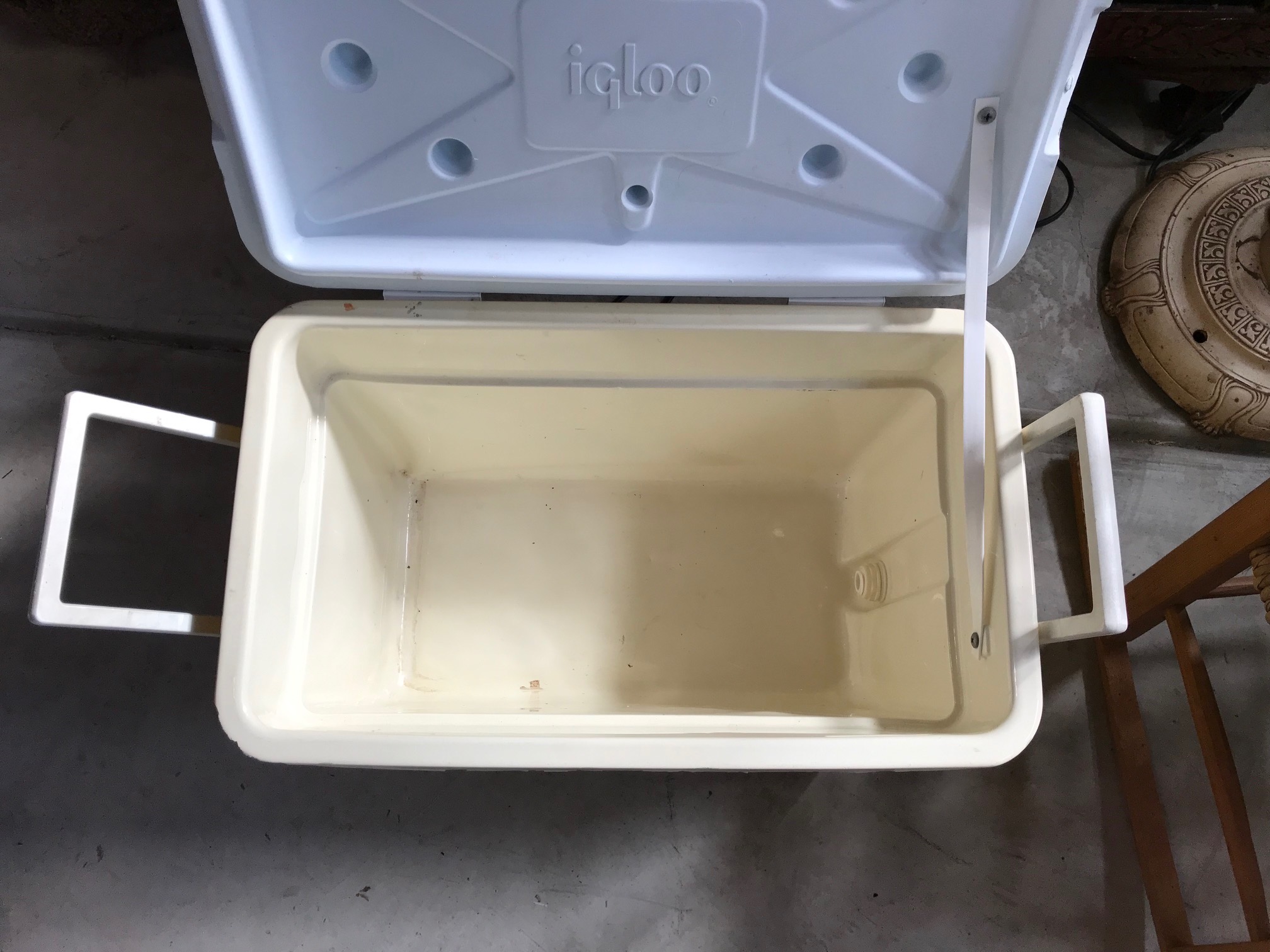 The cream plastic inside (food surface, image above):
The cream plastic inside (food surface, image above):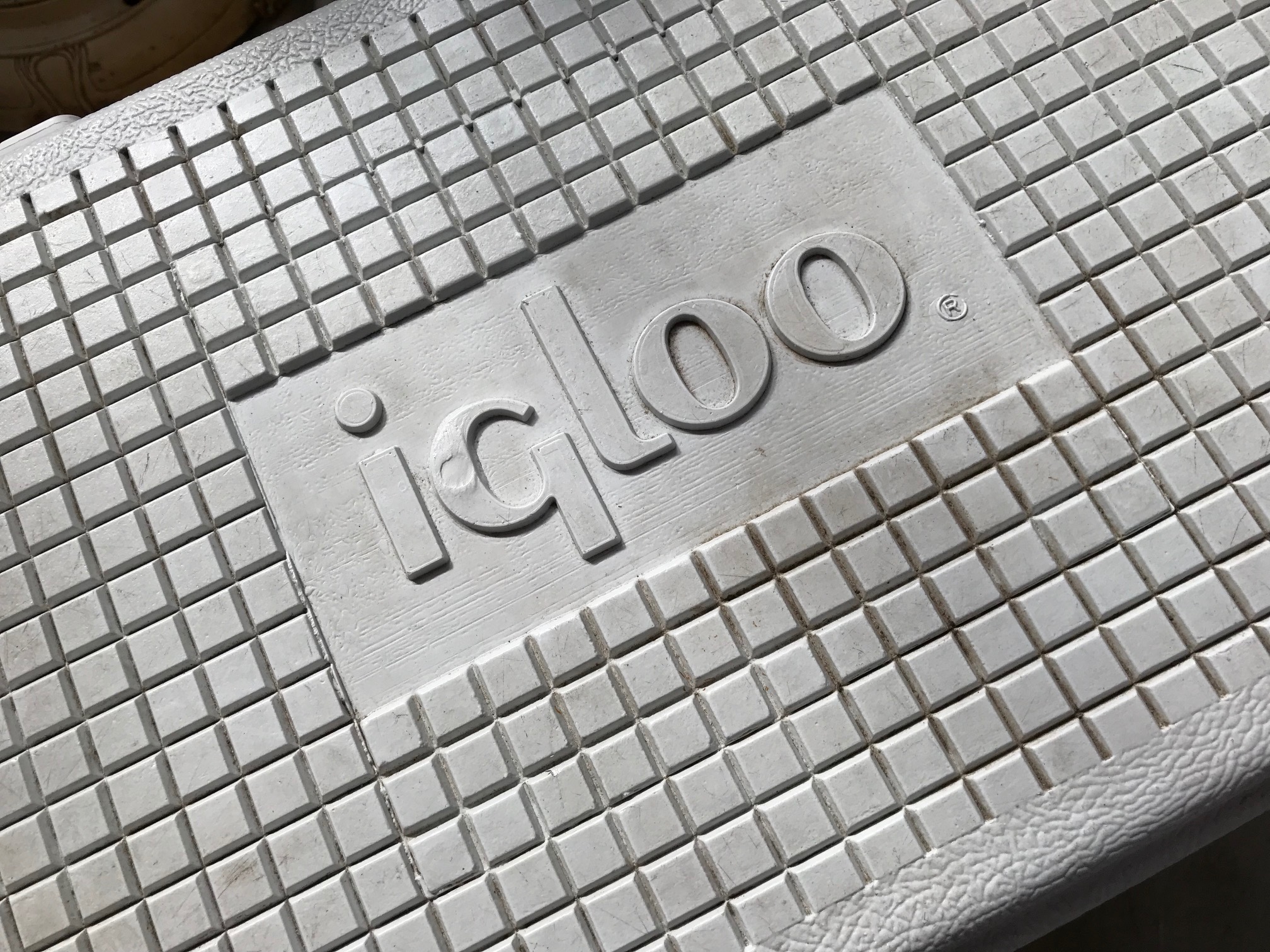 The white plastic lid (image above):
The white plastic lid (image above):
This XRF testing is irrelevant since it does nothing to accurately identify if there is any lead exposure.
Instead of testing lead content, you should be doing wipe tests to see what is available for transfer.
Giving bad scientific information is much more damaging to “the message” than having no advice.
Hi Jeff!
I will have to respectfully disagree with you on this one. The cost prohibitive nature of laboratory testing (including wipe sampling) makes XRF testing of consumer goods a very good first *glimpse* at potential for harm. There is nothing bad about this scientific information. I always clearly state that what I am reporting is XRF test results and I encourage my readers to do further testing using other methodologies if they want supporting evidence for any specific purpose (for example to determine potential health implications or as evidence in a lawsuit against a manufacturer.)
In the case of an item like this, purchasing a new Lead-free cooler is going to be (normally) less than the cost of any laboratory testing (including lab testing for dust or leaching) and therefore reporting the XRF test results freely to the public here on my blog gives them information they would not otherwise have – information they can use to help inform their choices and actions in the way they see best to protect their families.
Tamara
Is this suspected to be due to atmospheric lead from gasoline additives at time of manufacture, or from some other source of contamination?
Hi Greg.
Thank you for commenting.
No… actually the Lead is from colorants and stabilizers added to the plastics… which is supported by the much higher levels in the yellow. As with the yellow vintage Tupperware measuring cups – vintage yellow plastics are often high in Lead content.
Here’s a link to more yellow vintage plastic items I have tested: https://tamararubin.com/category/vintage-yellow-plastic/
Tamara
Hi Tamara,
Have you tested new coolers? Are they generally lead free?
Thanks
Would this apply to all the colors from that time period? The red as well?
Hi Tamera,
Have you tested any new igloo coolers? Have they remedied the lead problem?
Thanks
Hi Tamara! Thank you for all of the work you do! I try to buy the items in your Amazon shop frequently. I’m in the market for a cooler! But I don’t see that you’ve posted any brands you recommend. Help? I trust your work and I really don’t want to buy something I can’t trust.
this apply to the igloo retro half gallon jug?
i also got the retro square lunch bag
Thank you for everything you do!!
As a mom and health advocate I appreciate you and your time!
This is vintage – if you have new products that are retro in style they should be Lead-free.
T
Check retrospec and igloo at target have a prop 65 warning. Plastic and new still have this lead warning ⚠️